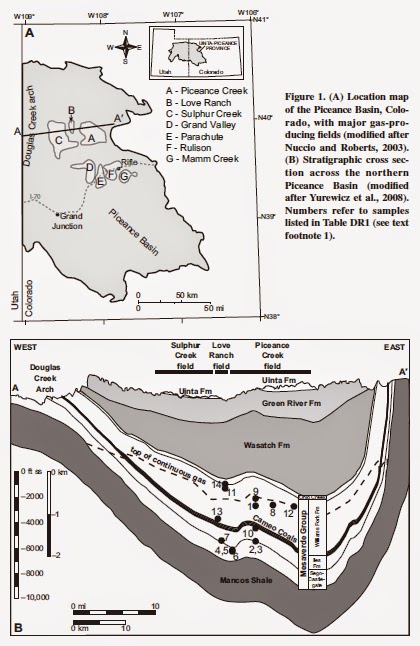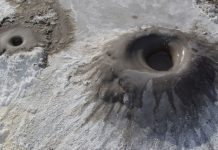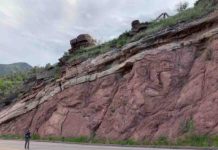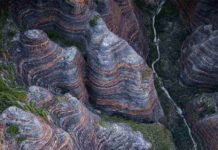
How long does it take for natural Earth processes to form hydraulic fractures? Is the formation driven by sediment compaction, oil and gas generation, or something else? What role do these natural fractures play in modern hydraulic fracturing production? A new GSA BULLETIN study by András Fall and colleagues from The University of Texas at Austin, Virginia Tech, and ExxonMobil addresses these questions, and the article is open-access online.
The process of fracture formation by a natural increase in pore-fluid pressure has previously been referred to as natural hydraulic fracturing. Researchers work to understand these fractures through examination of fluid inclusions trapped in minerals within the fractures. In this study, Fall and colleagues conclude that natural hydraulic fractures formed over time spans of 33 to 35 million years, driven by the slow generation of natural gas.
Natural fractures provide important pathways for the flow of water, natural gas, and oil in geologic formations, including unconventional tight-gas sandstone oil and gas reservoirs targeted for production by hydraulic fracturing. These fractures play an essential role during well completion and production by connecting pores in the reservoir rock storing oil and gas to the hydraulic fracture and wellbore that allow production. “Sweet spots,” or zones of higher than average permeability, have been attributed to the presence of these open fractures.
Successful prediction of zones of increased fracture abundance provides an opportunity to minimize drilling and completion costs as well as the environmental footprint of production. Successful prediction of natural fracture occurrence and their hydraulic properties requires models of fracture formation that are based on realistic mechanical, hydraulic, and chemical principles that can be tested against core, well-log, and production data.
Journal Reference:
A. Fall, P. Eichhubl, R. J. Bodnar, S. E. Laubach, J. S. Davis. Natural hydraulic fracturing of tight-gas sandstone reservoirs, Piceance Basin, Colorado. Geological Society of America Bulletin, 2014; DOI: 10.1130/B31021.1
Note : The above story is based on materials provided by Geological Society of America.










